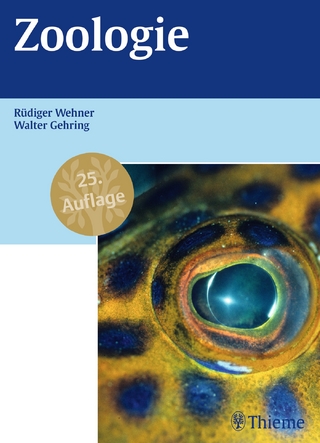
Ecology of Bats
Kluwer Academic / Plenum Publishers (Verlag)
978-0-306-40950-9 (ISBN)
- Titel ist leider vergriffen;
- Artikel merken
The vast majority of what we know about the ecology of bats is derived from studies of only a few of the approximately 850 species, yet in the past two decades studies on bats have escalated to a level where many important empirical pattems and processes have been identified. This knowledge has strengthened our understanding of ecological relationships and encouraged hypothesis testing rather than perpetuated a catalog of miscellaneous observations.
1 Roosting Ecology.- 1. Introduction.- 2. Day Roosts.- 2.1. Adaptations for Roosting.- 2.2. Roost Activities and Time Budgets.- 2.3. Roost Fidelity.- 3. Night Roosts.- 3.1. Resting Places.- 3.2. Feeding Perches.- 3.3. Feeding Roosts.- 3.4. Calling Roosts.- 4. Summary.- 5. References.- 2 Ecology of Bat Reproduction.- 1. Introduction.- 2. The Timing of Breeding Seasons.- 2.1. Effect of Variations in Latitude.- 2.2. Rainfall and Its Effect on Food Supply.- 3. Environmental Factors Affecting Specific Reproductive Events.- 3.1. Spermatogenesis and Androgenesis.- 3.2. Estrus and Ovulation.- 3.3. Mating.- 3.4. Delayed Fertilization.- 3.5. Pregnancy and Lactation.- 3.6. Environmental Factors Affecting the Growth and Survival of Young.- 3.7. Puberty and Subsequent Fertility and Fecundity.- 4. Summary.- 5. References.- 3 Growth and Survival of Bats.- 1. Introduction.- 2. Prenatal Growth and Development.- 2.1. Length of Gestation.- 2.2. Time and Synchrony of Parturition.- 2.3. Developmental State at Birth.- 2.4. Litter Size.- 3. Postnatal Growth and Development.- 3.1. Preflight..- 3.2. Postflight.- 4. Survival.- 4.1. Survival Analyses and Results.- 4.2. Survival Determinants.- 4.3. Survival Strategies.- 5. Summary.- 6. References.- 4 Evolutionary Alternatives in the Physiological Ecology of Bats.- 1. Introduction.- 1.1. The Significance of Physiology to the Ecology of Bats.- 1.2. The Significance of Bats for Physiological Ecology.- 2. The Energetics of Bats.- 2.1. Factors Determining the Energy Expenditure of Bats.- 2.2. Ecological Significance of Energetics for Bats.- 2.3. Energy Budgets.- 2.4. The Evolution of Bat Energetics.- 3. The Water Balance of Bats.- 3.1. Kidney Function.- 3.2. Balancing a Water Budget.- 4. Distributional Limits to Bats.- 4.1. Temperate Limits of Tropical Bats.- 4.2. Limits to Distribution in Temperate Bats.- 5. Summary.- 6. References.- 5 Ecological Aspects of Bat Activity Rhythms.- 1. Introduction.- 2. Methods for Recording the Activity of Bats.- 3. Activity Patterns and Timing of Flight Activity under Natural and Controlled Conditions.- 3.1. Activity Patterns.- 3.2. Arousal and Timing of Flight Activity.- 3.3. Light-Sampling Behavior.- 3.4. Influence of External Factors on Activity Rhythms.- 4. Activity Rhythms during Hibernation.- 5. The Endogenous Origin of Bat Activity Rhythms.- 5.1. Circadian Activity Rhythms.- 5.2. Susceptibility of Period to Exogenous Influences.- 5.3. The Phase Response of Circadian Activity Rhythms to Light Pulses.- 5.4. Entrainment of Circadian Rhythms.- 5.5. Range of Entrainment and Speed of Resynchronization.- 6. Ecological Adaptation of Circadian Systems and Evolutionary Aspects.- 7. Summary.- 8. References.- 6 Ecological Significance of Chiropteran Morphology.- 1. Introduction.- 2. The Trophic Niche.- 2.1. Flight and Wing Morphology.- 2.2. Jaw Morphology and Diet.- 2.3. Brain Size.- 2.4. General Morphology and Feeding.- 3. Morphology and Community Structure.- 3.1. Species Packing in Temperate versus Tropical-Bat Communities.- 3.2. Results from Principal-Components Analyses.- 4. Sexual Dimorphism.- 5. Geographic Variation.- 6. Summary.- 7. References.- 7 Echolocation, Insect Hearing, and Feeding Ecology of Insectivorous Bats.- 1. Introduction.- 2. Echolocation Calls.- 2.1. Call Structure.- 2.2. Intensity.- 2.3. Frequency.- 2.4. Pulse Repetition Rates.- 2.5. Harmonics,.- 2.6. Effective Range.- 3. Hearing and Insect Defense.- 4. Responses of Bats to Insect Hearing.- 5. Bats as Specialists.- 5.1. By Time.- 5.2. By Diet.- 5.3. By Foraging Strategy.- 5.4. By Space.- 5.5. By Morphology.- 5.6. As Rapid Feeders.- 6. Other Considerations.- 7. Summary.- 8. References.- 8 Foraging Strategies of Plant-Visiting Bats.- 1. Introduction.- 2. Food Availability and General Foraging Strategies.- 2.1. Food Availability.- 2.2. General Foraging Strategies.- 3. The Foraging Behavior of Plant-Visiting Bats.- 3.1. Food Habits and Diet Breadth.- 3.2. Foraging Behavior.- 3.3. Case Histories.- 4. Summary and General Conclusions.- 5. References.- 9 Coevolution between Bats and Plants.- 1. Introduction.- 2. Coupled Speciation.- 2.1. Evolutionary Origins of Frugivory and Nectarivory.- 2.2. Effects of Bats on Plant Diversification.- 2.3. Coupled Speciation through Coevolution?.- 3. Complex Coadaptations between Bats and Plants.- 3.1. Coadaptations:.- 3.2. Flexibility and Diffuse Coevolution.- 3.3. The Search for Order: Pollination and Dispersal Syndromes.- 4. Ecological Consequences of Bat-Plant Interactions.- 4.1. Variation in Effects.- 4.2. Demographic Effects?.- 4.3. Community Effects.- 5. Does Coevolution "Matter"?.- 6. Summary.- 7. References.- 10 Ecology of Insects Ectoparasitic on Bats.- 1. Introduction.- 2. LifeCycles.- 2.1. Patterns.- 2.2. Food and Feeding.- 2.3. Influence of Climate and Host Hibernation.- 2.4. Causes of Mortality.- 2.5. Number of Generations per Year.- 3. Host Associations.- 3.1. Introduction.- 3.2. Patterns.- 3.3. Reasons.- 4. Host Location and Dispersal.- 4.1. Locomotion.- 4.2. Initial Location and Transference between Hosts.- 5. Behavior on or Near the Host.- 5.1. Introduction.- 5.2. Patterns.- 5.3. Ectoparasites and Host Health.- 6. Population Dynamics.- 6.1. Introduction.- 6.2. Patterns and Limits.- 6.3. Age Structure.- 6.4. Sex Ratio.- 6.5. Changes in Abundance with Space and Time.- 7. Conclusions.- 8. Appendix.- 9. References.- Author Index.- Species Index.
| Erscheint lt. Verlag | 31.10.1982 |
|---|---|
| Zusatzinfo | 54 black & white illustrations, biography |
| Verlagsort | Dordrecht |
| Sprache | englisch |
| Gewicht | 588 g |
| Themenwelt | Naturwissenschaften ► Biologie ► Zoologie |
| ISBN-10 | 0-306-40950-X / 030640950X |
| ISBN-13 | 978-0-306-40950-9 / 9780306409509 |
| Zustand | Neuware |
| Informationen gemäß Produktsicherheitsverordnung (GPSR) | |
| Haben Sie eine Frage zum Produkt? |
aus dem Bereich


